Several months ago, Asheville resident Jim Chatham contacted Xpress concerning a project he was leading. Inspired by Eno Publishers’ 2012 release, 27 Views of Asheville, Chatham challenged graduates of his periodic writing seminar, “Turning Your Life Into Literature,” to take a whack at producing their own verbal snapshots of this unique community. Twenty-one of them heeded the muse and subsequently gathered to share their respective offerings. (photos by Max Cooper)
Most of the writers live in Givens Estates and Deerfield retirement communities, and as Chatham observes, “Collectively, they represent an incredible history of worldwide experience: That’s part of why their stories are so interesting. All are relatively mobile; one is nearly blind, another has a severe speech impediment, but none of that stops them.” Each author holds the copyright to his or her contribution.

Due to the formidable heft of this whole package, these pieces will be spread across two print issues of Xpress, Jan. 2 and Jan. 9 (you can also find them on our website, www.mountainx.com). We invite you to dive in and sample this fascinating potpourri of perspectives and insights by assorted Asheville elders. Happy foraging! — Senior Editor Peter Gregutt
Have you visited your vortex today?
by Ingram Cannon Parmley
Have you ever experienced a vortex? Me neither. I have heard about them, however, and I understand that Asheville is a center for them. Vortices are supposed to be areas where the earth emits psychic and spiritual energy. I suppose it spirals out of the earth, as “vortex” implies; invisible but felt by the believers who make pilgrimages to them.
I don’t know what vortices have to do with it, but I suggest that the vortex be adopted as Asheville’s emblem and mascot, its image mounted front and center in the city’s great seal. (I leave it to those who’ve seen a vortex and know what one looks like to design the seal.)

I make this modest proposal because my experience of Asheville has been one of abundant good energy that empowers and drives the people. And after all, what is Asheville if not people?
That energy wasn’t obvious the first time we drove through town in 1960; sleepy is a better way to describe how it was then. Over the years, however, we’ve seen the changes and enjoyed the Land of the Sky, so deciding to spend the rest of our lives here wasn’t difficult.
Think about it! Look at the people: Ever seen such resplendent and varied garb? Hairdos? We have them all. Hats and headdresses? Get them here. Music? From genuine folk to pop, jazz, rap, opera, symphony, musical theater and points in between. Nightclubs, live theater, dance, live comedy; churches, temples, synagogues, mosques and even a basilica.
Newspapers and television. Restaurants? Lord, you can get anything from caviar to possum fritters and anything else you can describe to a waiter or a chef in this town.
Artists, artisans and crafters were everywhere until we moved them down to the river.
Manufacturing on the rise, creating jobs and promising more (can’t leave out the beverage industry). Concern for the environment and stewardship of Mother Earth.
People helping people: the homeless, hungry, sick, lonely, disabled. Don’t tell me it’s not enough, that there are still people in need: I know that. But nobody tries harder than the good people of Asheville.
Colleges and other schools, both traditional and innovative.
And the folks who choose to call this place home and make their creative contribution to the city’s life power all of it. Diverse, colorful, welcoming, inclusive, cooperative, always trying to do better. The energy flows from Asheville’s people to its people.
You don’t have to spend much time around Pritchard Park or Pack Square to experience the variety and celebrate the energy. But in fact, you find it everywhere: in the artist who works another job to support her art habit; in the parents who choose to live here for the support they find for family life, safety, education and religious expression.
Asheville, city of energy — people energy — living lives both individual and communal in a place that’s creative, enlightening and encouraging.
City of the vortex. Land of the Sky. Home.
A dancing town
by Betty Sisk Swain
It was the summer of 1942 and my family had just moved to Asheville. I was 13 going on 14, and I took this upheaval in my life as something of a personal insult. My protests were loud and long at being torn away from my old neighborhood, all my very best friends, saying goodbye to all my classmates — especially the boys I’d recently discovered as being different from brothers. Then, one magical summer evening, my new neighbors invited me to a downtown street dance: a square dance.
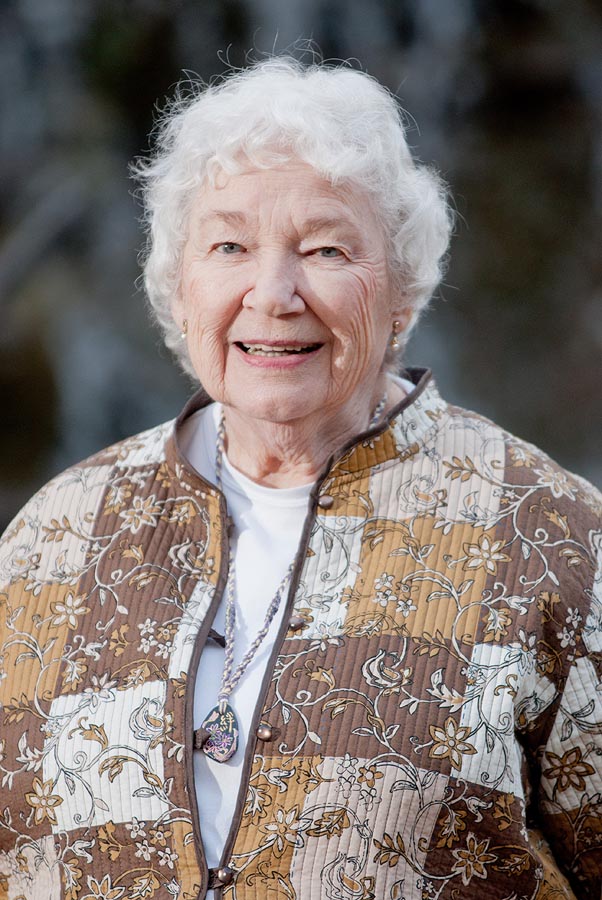
This was a new experience for me. I’d learned a few popular dance steps with girlfriends on somebody’s front porch with music provided by a wind-up Victrola, but I’d never been to a street dance. I’d never, ever danced with a boy or in a public place, and I’d never even heard of a square dance. So, filled with fearful misgivings and excited anticipation, I joined six teens and one parent packed into a late-model, large-capacity Hudson, and we were off.
You could hear the music as we got closer; people of all ages crowded Page Avenue, which had been blocked off. In the center, a large, raised bandstand held a half-dozen musicians with banjos, guitars and fiddles, and two or three gentlemen who took turns calling the dances. The street was strung with lights, and loudspeakers broadcast lively, foot-tapping music.
I had never seen such wildly choreographed swinging and stamping and utterly joyous movements in my young life. Thoroughly captivated, I hung back at first but kept edging closer and closer to the front circle of onlookers until I could see the dancers’ faces and hear their laughter over the music. Oh, how I longed to be part of this noisy, carefree crowd of happy people!
My clapping hands and excited countenance must have telegraphed my longing to a young man who appeared from nowhere, grabbed my hand and drew me into the dancing circle.
I pulled away, saying, “I don’t know how.”
He replied, “You kin breathe, caintcha?”
Oh yes, I could breathe, and I did. And I danced, I do-si-doed and allemanded left to my corner, and I did the shoo-fly swing and birdie-in-the-cage and promenaded my heart out. I thought it the most exciting, exhilarating time of my life, and Asheville became my home that night: my dancing home.
Asheville still dances: Bele Chere, Shindig on the Green, The Mountain Dance and Folk Festival, The Orange Peel, Diana Wortham Theatre and Pritchard Park, to name only a few delightful venues. And just like Asheville, in my heart, I will always dance.
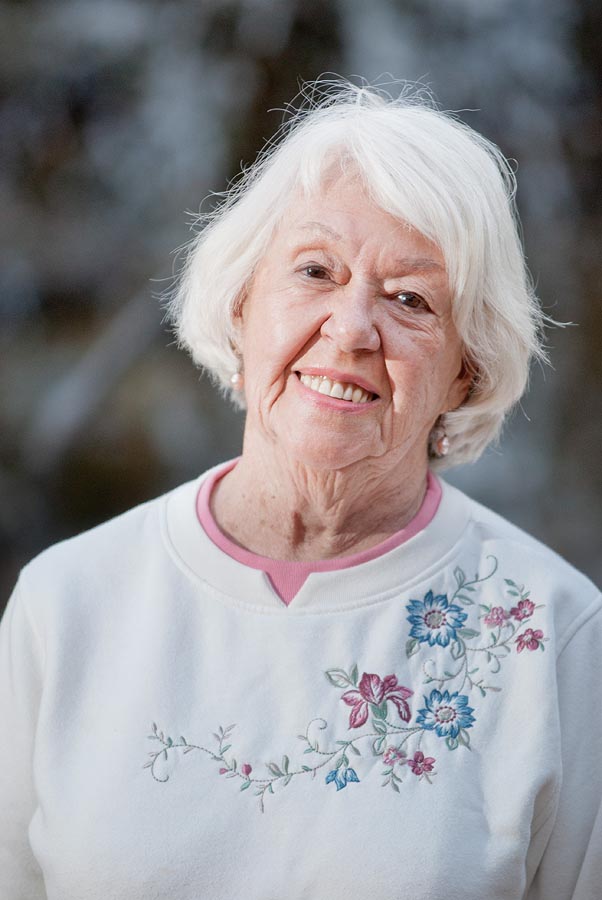
Asheville
by Jackie Gorman
Asheville is like a granny with an apron and a diamond nose stud.
An eccentric place
by Dave Stewart
“If it ain’t King James, it ain’t Bible.” The owner of that bumper sticker coexists, perhaps with some unease, in the same town that’s home to The Rock Girl, whose studio offers “chakra balancing, Reiki, psychic development, altars, crystal skulls and more.” That’s Asheville — diverse, tolerant and wonderfully eccentric.
A few months ago, local women once again demonstrated downtown for the right to go topless in public — even though this is already legal in North Carolina. And isn’t it interesting that the leadership for this event was provided by a guy who feels passionately that his wife needs the same right he has to take off her shirt in public, never mind that she tells him she doesn’t want to do that. Go figure, and welcome to Asheville.
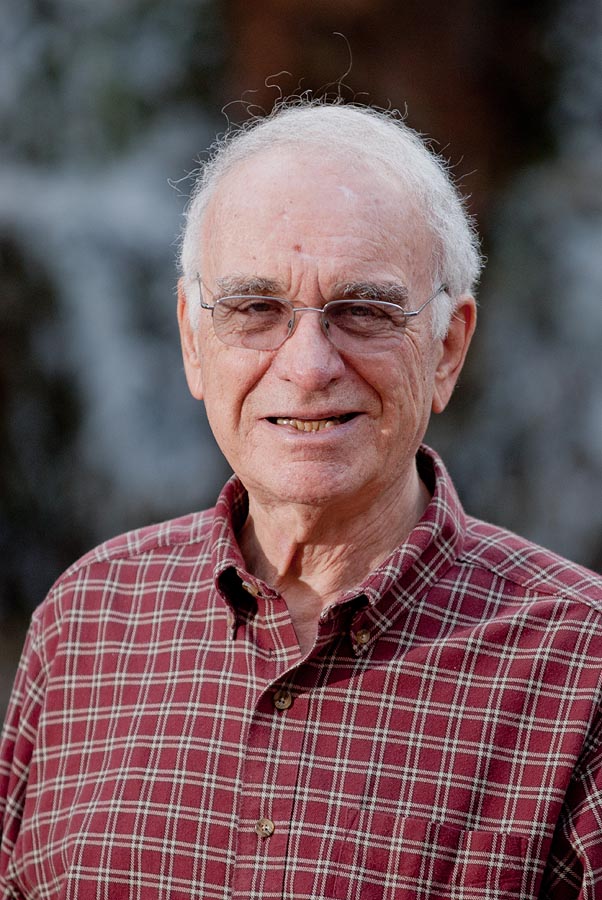
The obituaries in my town are not to be missed — in part because, these days, that’s where I’m most likely to read about someone I know. It was recently reported that one woman paused briefly over Mars Hill as she began her flight toward glory. Another departed soul, it was noted, had received her Bachelor of Square Dancing from the College of Do-si-dos and Allemande Lefts before going to her just reward. Good for her!
Another local eccentricity is how, sometimes, the good guys actually win. A perfect storm of dissent arose as the city was poised to erect a giant parking deck smack up against the rent-controlled Battery Park Apartments some years back. Residents complained that the project would block their prized views of the mountains, and the scheme was dropped. Where else is blocking low-income folks’ views considered a reason to halt what would have been a money-making venture?
Sports, too, take an odd twist at Asheville’s McCormick Field, whose scoreboard displays the scores of baseball teams labeled as Visitors and Tourists. Where’s the home team in this town, anyway?
Pritchard Park’s Friday drum circle is a big draw for locals and tourists alike. Several years ago, some residents in a newly built condo objected to the noise. The resulting community outcry said, basically, it’s you who ought to shut up. The drum circle, admittedly noisy and a bit scruffy around the edges, remains.
An entry in the outrageous category is Sister Bad Habit, who reminds me of Batman as she bikes through downtown, her nun’s habit flapping in her wake.
The Humane Society recently got a much-needed lift from a daylong Freaks & Geeks Tattoo Sideshow, which raised funds to provide critical care for homeless animals.
Asheville houses its garbage trucks in a handsome facility informally known as the Taj MaGarage. The first time I saw it, the balance was tipped, and I decided that this was where I wanted to retire. A town that did that for its garbage trucks, I reasoned, was clearly no ordinary place.
Yes, Asheville is eccentric, and while I don’t endorse everything that goes on, I do enjoy the passing parade. Life here is seldom dull.
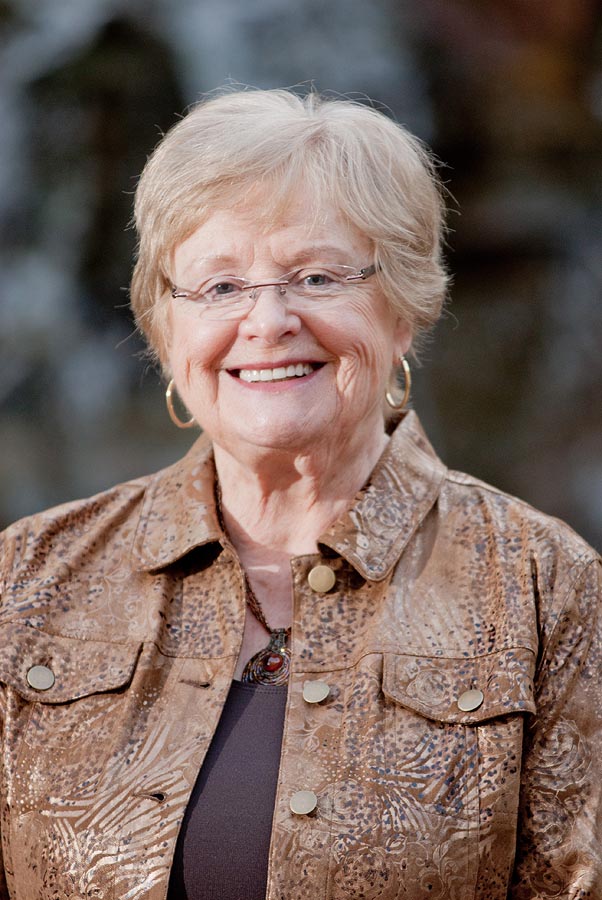
Home again
by Sheila Ingersoll
Travel-weary, silent and then
Look! The mountains
Distant dark peaks
A clear outline against a pale sky
Ancient hills beckoning
Spirits awakening
Vistas unfolding, rolling
seemingly unending
Rising and descending
Twisting, turning, always climbing
Higher now and closer
Cresting clouds puffing up
Competing
Endless trees marching
Sun-splashed tangled leaves
wisps of orange
filtered browns, shades of black
Envelop me in the palm of
Ashevilleʼs hand
Iʼm home

Mystical whispers
by Nancy Albyn
Nestled in the mountains alongside a river that flows through the valley lies the city: mystical, mysterious, spiritual, where Muses come and whisper to the people.
Asheville: It’s something to bark about
by Patches (loyal companion to Jerry De Land)
What’s happened to Jerry? He used to relish leaning on his horn; now he acts like he doesn’t even know where it is. The light’s turned green and we’re still sitting here while the driver up ahead carries on with that dude in the pickup and the German shepherd in the truck bed flirts with me. “Patches, relax: It’s Asheville’s laid-back culture,” says Jerry, sensing my impatience.
Yeah, like those lethargic downtown dogs hanging out by Malaprop’s. The weird kids with rings in their noses are pretty mellow too, but Jerry says that’s more a question of chemicals than culture (whatever that means).
Me, I enjoy the mix of dogs I meet; Jerry says they’re like the diversity of humans in Asheville, which is what makes it such a vibrant community. I’ve been instructed not to ask those dogs their pedigree. In Asheville, no one gives a hoot, just as the folks here don’t judge Jerry by the club or church he doesn’t belong to. Instead, people tolerate his shortcomings and celebrate the community’s diversity.
Here, we rail against monotony, sameness and standardization; independent merchants like Mast General Store, Malaprop’s and Tops thrive among the industry giants and seldom say anything when I tag along (provided I behave). But it’s hard to sit still amid all that attention from so many dog lovers.
I don’t know if I told you, but I have a good sense of smell, and almost everyone who comes to the house reeks of dog. There must be more canines than people living in Asheville. And during our walks around Beaver Lake, most everyone makes eye contact, nods and wants to talk. Strange, this chatting with strangers, as if we had no other pressing business!
Speaking of strangers, you may not realize it, but Jerry’s very self-reliant. “I can handle it,” he says, though lately he’s started letting go. The other day, my leash got all tangled up as I scarfed up a blob of black-bean hummus (my favorite) from under a bench in front of Jubilee. Jerry, meanwhile, was struggling to help Connie get out of the car when a young couple walked by. They hesitated, and the soft-spoken girl said, “Need some help?” Silence. I thought, what are you waiting for? Then — surprise — Jerry accepted the offer. The girl immediately took charge, helping Connie out of the car and accompanying her, hand in hand, toward Full Circle Salon. Her friend, down on all fours beneath the bench, untangled my leash.
Jerry thanked them, and the girl replied, “No problem; we’ll all be there one time or another.”
We walked on. “Asheville: It’s all about the people,” Jerry said to Connie. I nudged him and he mumbled, “Oh yeah, and the dogs.”
Railroad town
by Elizabeth Byerly
Noon on a weekday, and traffic was at a virtual standstill in Biltmore. Sighing, I switched off the ignition to wait. Then I noticed the billboard on my right, displaying this come-on:
“Caught by train? Text Moe’s for Gr8 Deals”
I don’t text; I do know how to spell “great.” Nevertheless, I was curious about what Moe was selling. As the freight train creaked through the Hendersonville Road crossing, a dozen gondolas overflowing with wood chips, I had time to prepare my “order” to Moe: a film depicting Asheville’s railroad history, produced and directed by me.
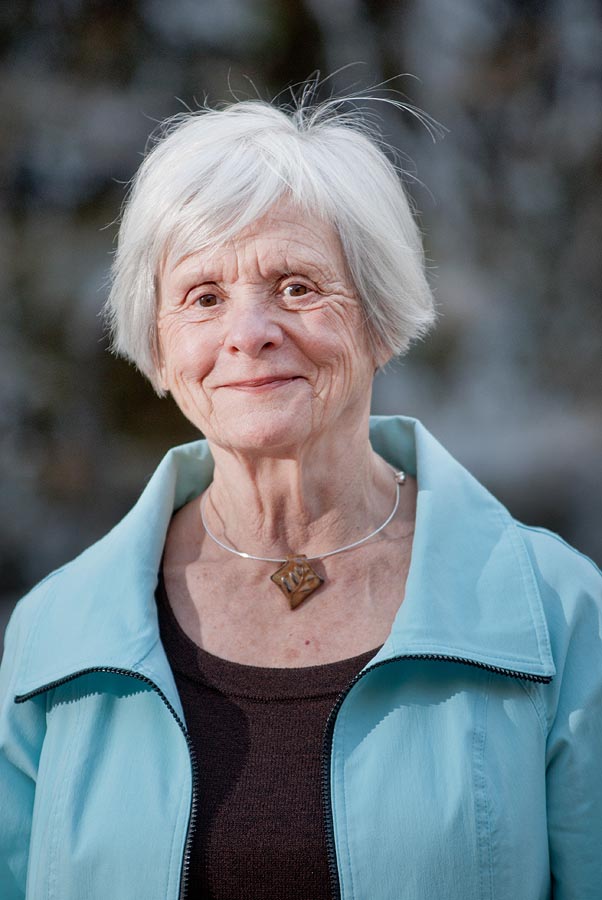
Here’s my idea for the movie (sometimes silent, more often with sound): first, a young George Vanderbilt with his mother in the 1880s, thinking about how to bring their wealthy friends to Asheville for seasons of clean air and good water. Next would be a picture of me with my mother, reading The Little Engine That Could as a bedtime story, sounding out the refrain with gathering momentum: “I think I can, I think I can, I think I can…”
Flash-forward to 1945 and my very first trip by rail. A Southern Railway train chugging into Old Fort en route from Winston-Salem to Asheville to visit Aunt Elizabeth. Sitting in a coach, the excitement of little box lunches, the spout of Andrews Geyser, the addition of a second locomotive for the ascent through seven tunnels (count them: one, two, three…). The men across the aisle — none other than Roy Acuff, the King of Country Music, and his Smoky Mountain Boys. Roy signed my little sister’s autograph book.
The final image would feature our passenger train pulling into the Biltmore Village station. No shops, no restaurants, no parking decks, just a lovely little park with a church across the way…
Together we had caught a train; the train had not caught us. Now that was a great deal.
Mountain sunsets
by Jack Ingersoll
“Twinkling vapors arose; and sky and water and forest/Seemed all on fire at the touch, and melted and mingled together.” — Henry Wadsworth Longfellow, “Evangeline” (Part II, Section II)
As a child and young adult, I was constantly amazed by San Francisco’s glorious Pacific Ocean sunsets. The combination of sea, sky and clouds produced a daily spectacle defying description: brilliant purples, reds, pinks and yellows with white, gray and, at times, near-black clouds, all framed by the setting sun, which highlighted the curtain of fog and vapors that typically hung offshore. No other scenes, it seemed, could ever hope to equal these.
But when we arrived in Asheville, many years after leaving the Bay Area, we discovered that San Francisco wasn’t the only place where one could revel in miraculous sunsets. Here there was no ocean to swallow the sun, but the mountains served a similar purpose, slowly extinguishing the flame as night fell. We marveled at the vistas from our home’s western rooms and porch at twilight, especially between late fall and early spring. After the trees surrounding our house on Sunset Mountain had surrendered their red, brown and golden-yellow leaves in the fall, and before they regained their green, leafy clusters in the spring, we had clear views of sunsets behind Mount Pisgah and the ranges north and south of it.
During the 17 years we lived there, we were treated to unmatched splendor as the sun sank behind the mountains, silhouetting them while the clouds and western sky above reflected colors ranging from subtle pastels to deep, rich hues. Orange and brilliant-red flames seemed to shoot up from the mountains and bounce off the clouds.
We’ve witnessed sunsets here that could rival any to be seen anywhere: Yet another reason to be truly grateful that Asheville’s our home.
Weird and wonderful
by Lane Waas
The sun was glinting off the storefront window but, adjusting my position, I spotted it. Hanging on the headless torso of a well-endowed mannikin, the T-shirt proclaimed, “I MAY BE WEIRD, BUT I’M FROM ASHEVILLE.” Quickly entering the store, I bought the lone remaining shirt, chuckling to myself as I thought, “That’s why I love Asheville!”
I looked up “weird” and found a list of synonyms: strange, odd, bizarre and unusual. Its antonym, “normal,” is a word long since dropped from descriptions of the Asheville I love.
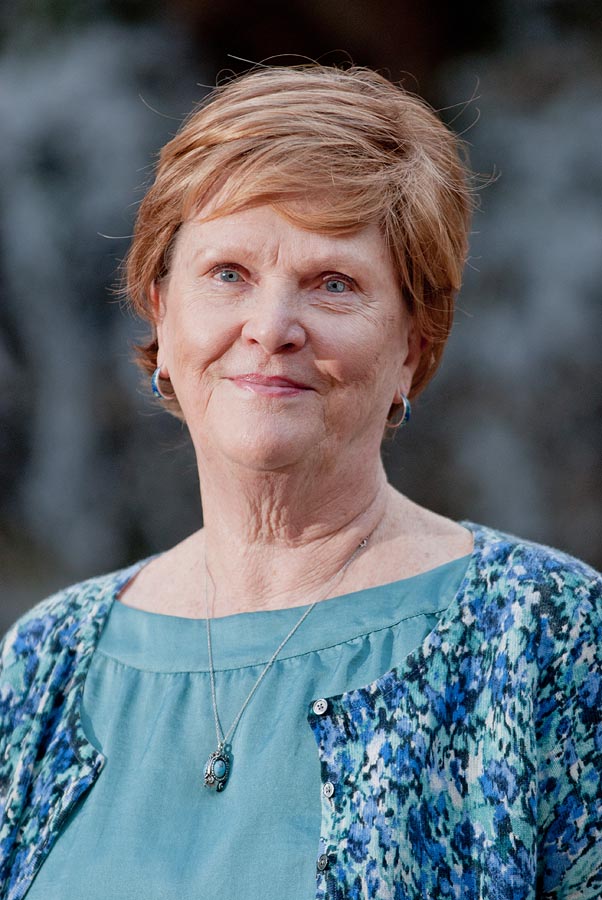
Moving here 10 years ago, I was astonished at the fabulous arts-and-crafts world I found. Not surprisingly, Asheville has been named the No. 1 city of its size in the U.S. in this regard, supplanting long-standing favorite Santa Fe. Paintings, drawings, glass, sculpture and countless other beautiful, strange, even bizarre art forms fill shops on every corner, studios in the incredible River Arts District, and events such as The Big Crafty and the Craft Fair of the Southern Highlands.
But craft isn’t limited to pretty objects. Asheville’s dozen-or-so breweries won it Beer City USA honors. The many offbeat performing-arts venues, not to mention Laugh Your Asheville Off, the purple LaZoom bus, The Orange Peel Social Aid & Pleasure Club, the Fringe Festival and the GoTopless Rally all contribute to making this a gloriously weird and celebratory city. The many free news sources feature hundreds of alternative practitioners, some of them strange if not outright weird! Within a mile of where we live, there are countless ethnic restaurants, and only a few miles distant is a self-described “dive” serving delicious food while announcing its preference for black T-shirts, tattoos and dreadlocks.
First and foremost, though, it’s the wild assortment of occasionally weird folks who live and visit here that make Asheville unique. Walk around downtown and you’ll find street musicians, talented mimes and groups all ages gathered around the fountain or in the several parks, dressed in all manner of costume and preaching, protesting or cheering a multitude of causes. There’s a multigenerational drum circle, even a Hula-Hoop competition. Downtown After 5 revelry and “Shindig on the Green,” not to mention Bele Chere and an endless succession of carnivals, shows and strolls, offer further offbeat choices. Meanwhile, a recent choral concert featuring hippie-attired dancers — one of whom is 90, and another who’s a retired CIA operative — displayed the unusual diversity of elder Asheville.
Perception is colored by age and experience, and some may not think of this creative explosion that is Asheville as weird. But as a former art teacher who was teasingly called crazy or weird, I have definitely found my home.
Best places
by Don Kern
I became acquainted with Asheville when I accepted a position as controller at Beacon Manufacturing Co. in Swannanoa, the biggest manufacturer of blankets in the world. Dick Malone and I carpooled from our homes in Lakeview Park, in north Asheville, to the plant, enjoying the mountain views en route. Summer days cooled off in the evening: barbecuing time. Asheville’s climate was ideal; we enjoyed all four seasons, none severe.
There were nice residential areas, and thanks to the city’s financial woes during the Depression, I couldn’t believe the bargain we got in 1964. The beautiful Williamsburg-style brick home on the side of Reynolds Mountain came with two-and-two-thirds fully landscaped acres, a tennis court and a greenhouse. Our backdoor neighbors, J.C. and Margo McGee, became lifelong friends. We were members of Central United Methodist Church downtown and developed good connections with many in our Sunday school class. We made more friends playing bridge in a dinner group that moved among the members’ homes.
We later lived in Danville, Va., and Greenville, S.C., taking turns with another couple driving from Greenville to Asheville and vice versa to play bridge. We moved back to Asheville when I retired in 1995, buying a home in Biltmore Forest from Jack Cecil.
We now live in Deerfield with 650 other retirees from all over the country. With a lovely campus and caring employees, the well-managed facility has won awards as the best retirement community in the country. I’m in an independent-living apartment; Shirley lives in a skilled-nursing unit. And having paid a larger entrance fee for life care, our monthly payment didn’t increase when Shirley moved there. Our son, a veterinarian, lives in Waynesville, about 30 miles away, and the scenery is enthralling when we drive there.
Phil Stull decided to move the American Enka Co.’s headquarters to the best place to live in America. The choice came down to San Francisco and Asheville: He moved his company to Asheville.
Downtown Asheville
by John Swan
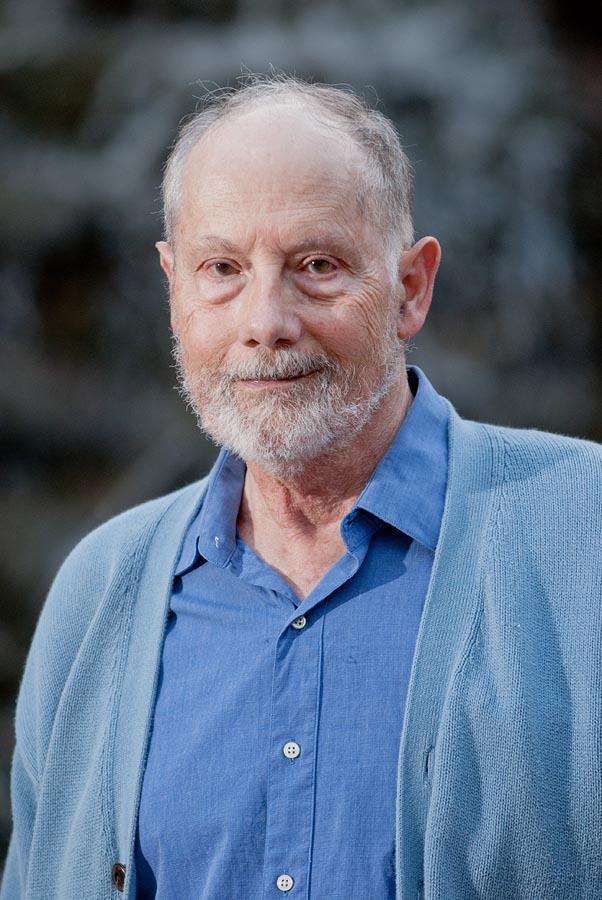
Downtown Asheville is New Orleans’ French Quarter on a hill, with street music, shops with character and colorful people — but lacking a good supply of bars with nude women or men for your viewing pleasure. Away from center city, however, Asheville’s unique essence evaporates with the morning fog, becoming Anywhereville, USA.
First-year impressions
by Vivian Frederick
Awesome mountain scenery
Southern charm
Heavenly fall foliage
Excellent museums, educational facilities and medical infrastructure
Village-size downtown with big-city attitude
Intellectuals, artists, musicians, poets, actors and writers are everywhere
Little ducks following their mama across my lawn
Lots of great restaurants
Ever-present Biltmore: House, Square, Avenue, Forest, Park, etc., etc., etc.
And I’m loving every bit of it!!!!!
The city where anything goes
by Elaine Kabat
Seen from above, Asheville sits deep in a “bowl” surrounded by trees and high mountains. But while the region is known for its scenic views and mountain trails, once back on the ground the adventurous explorer can discover an altogether different world, particularly in the more urbanized settings of downtown and West Asheville.
For me, it brings to mind an earlier time. As I stepped out the doors of the Downtown Inn during the summer of 2009 — my initial visit as I considered resettling here — what I saw evoked the “do-your-own-thing/anything-goes” hippie era of my young-adult years.
Within a block of the hotel, I encountered young men in Pritchard Park sporting long hair and ponytails. Turning left on Haywood Street, I spied guitar-strumming musicians entertaining passers-by.
An about-face led me to the Firestorm Café, which I’d discovered during my research before the visit. Perusing the book selection and eavesdropping on some conversations confirmed that this alternative enclave indeed provided a welcoming environment for folks who might not feel comfortable in more conventional settings. The laid-back ambiance made it a perfect place to relax, play board games, chat or just escape the heat outside without being hassled.
On later visits, I found myself striking up conversations with strangers in Malaprop’s, minus the inhibitions and hang-ups so common in the Northeast. One such encounter resulted in my having a lady companion for the duration of my stay.
West Asheville features similar offbeat enclaves. In cafés such as 444 Haywood Road, one can meet quilt-makers and admire the crafts on display while sipping coffee or enjoying a sandwich.
Yes, Asheville is like a time machine transporting me back to the the offbeat, hippie generation. But the current crowd of long-haired youth are what I call “Johnny-come-lately hippies,” since they hadn’t even been conceived yet back when being a hippie was fashionable.
Walking on two legs
by Bob Sigmon
If the people of Asheville want to be whole, we’ll have to walk on two legs: one focusing on the external world and the other on our inner, spiritual, mystical selves (Mayan proposition).
Since moving to the area in 1999, I’ve asked people I meet, “Why did you come here?” Many respond, “I visited and almost immediately felt led to move here.”
They talk about a sense of place: the 24 identified power vortices running through the area between Black Mountain and Waynesville; the magical powers of the quartz in these ancient mountains. The Cherokee nation’s history and traditions; the many independent publications; yoga heaven; music (Moog); spiritual practices; scenic beauty; non-Western health care, and Internet access to rest of the world.
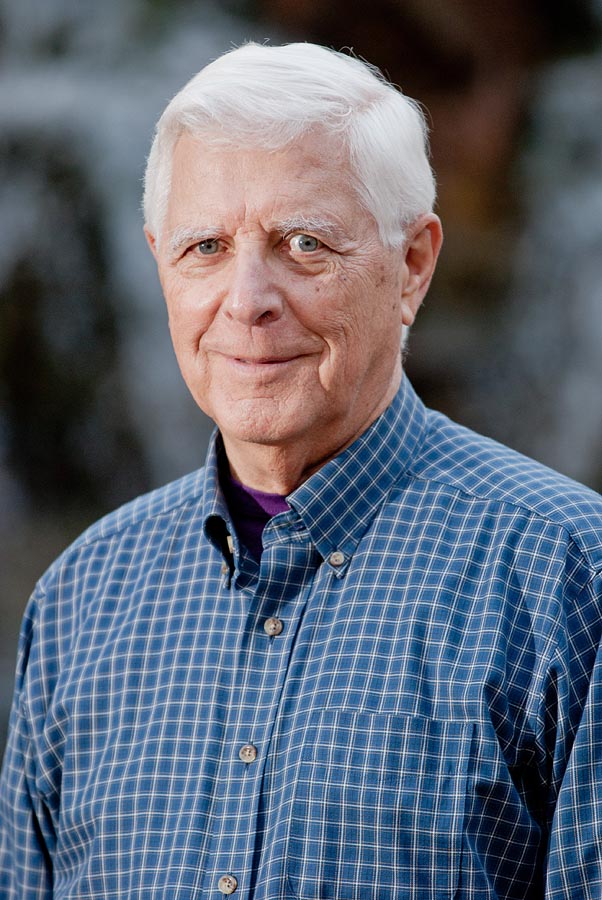
I’ve come to believe that the multiple vortices, civic forces and distinctive individuals in the Asheville basin are a seed field for creating conditions so that all of us can walk on two legs, in harmony with the miracles of the earth, plants, streams, wildlife, sun, wind and rain. This seed field suggests a fable of sorts, perhaps a fantasy for the area.
What if, in the next decade, many of the forces and movements fueled by the vortices serendipitously began working collectively to support all of us walking on two legs?
Imagine what our individual and collective lives would be like if:
1. All residents could read and write well and have a sense of the history of this place, how it’s changed, how it works now and could work for the benefit of all residents and natural life forms.
2. Half our food were locally produced, and everyone had enough to eat.
3. All residents had safe, comfortable housing with public transportation available.
These realities focus on the leg that interacts outwardly through work and play. Results would include job creation, well-being, a low crime rate, an emerging local economic system and a sense of community realized. Then, to develop the other leg the Mayans speak of, what if:
4. All residents could express themselves through at least one art form and have access to a variety of spiritual, inner-work opportunities, helping all of us discover, express and practice our innate gifts.
As the efforts of these four energy fields meshed to facilitate all of us walking on two legs, we’d begin to see that we were healthier, wiser, freer, more autonomous — and more likely to serve and care for the earth and our neighbors (paraphrase from R. Greenleaf).
What individual contribution can each of us make to support institutions and movements working toward these ends? What gifts might we receive as we became involved in such works?
The sea, the sea…
by Florence Wallin
Our boating lives had given us the mantralike focus that was steering us toward the North Carolina coast in search of seaside property. Tom’s appointment at Greenfield College now provided housing. Meanwhile, we had a nest egg from selling our home, and we were staying with our son in Hickory during a hurried, nonproductive property-hunt weekend.
An early breakfast and departure saw us making good time on the interstate. “At this rate, we’re home free. We’ll have no problem making that trustee dinner.” Head back against the seat, I closed my eyes, still sleepy from our early rising.
After awhile, Tom exclaimed, “Good grief, how gorgeous! This is beautiful country.”
I took a quick look, then sat up and quietly watched the scenery go by. As the elevation increased, the views were extraordinary, with mountain after mountain looming ahead. Side roads curved off into the forests that lined our route: People lived there. Thrilled by these sights, we continued on in silence.
“Maybe we should look for property here,” I murmured.
“You know it’s way too far from the water,” countered Tom.
“But it might be a good investment until then,” I replied. “After all, we love mountains too. Remember in Switzerland? We climbed all over the Alps in those two years. At least we could pick up a brochure or something.”
“We don’t have time now. We’ll be late getting home as it is.”
“Oh, we have at least a half-hour to spare.”
Despite some grumping, we turned and followed directions into Asheville, looking for a realtor.
“This is your act,” said Tom as we finally found Bob Scott’s office on College Street. “Good luck,” he added with a wink.
Bob was on the phone when we entered, one of those never-ending affairs. Finally he turned to us, saying cheerily, “What can I do for you folks?”
I quickly told him that we didn’t have much time but were interested in homes in the area.
“If you’re in a hurry, you should know up front that I’m in commercial real estate. I’ll have to call someone else.”
That was that; we should grab a brochure and go. Tom, though, seemed focused on one photo.
“I see you’re looking at the rondette,” said Bob. “They’re inspired by Buckminster Fuller: a nice idea but overbuilt. I’ll be a real estate witness in the bankruptcy. The hearing will be in month; the cost is already declared.”
He told us the numbers, and Tom’s eyes met mine. It was a fraction of our nest egg.
“Look, Bob,” said Tom. “We do have to go. You’ve been a big help. This Buckminster Fuller brochure, we’ll take it along.”
The city where anything goes
by Elaine Kabat
Seen from above, Asheville sits deep in a “bowl” surrounded by trees and high mountains. But while the region is known for its scenic views and mountain trails, once back on the ground the adventurous explorer can discover an altogether different world, particularly in the more urbanized settings of downtown and West Asheville.
For me, it brings to mind an earlier time. As I stepped out the doors of the Downtown Inn during the summer of 2009 — my initial visit as I considered resettling here — what I saw evoked the “do-your-own-thing/anything-goes” hippie era of my young-adult years.
Within a block of the hotel, I encountered young men in Pritchard Park sporting long hair and ponytails. Turning left on Haywood Street, I spied guitar-strumming musicians entertaining passers-by.
An about-face led me to the Firestorm Café, which I’d discovered during my research before the visit. Perusing the book selection and eavesdropping on some conversations confirmed that this alternative enclave indeed provided a welcoming environment for folks who might not feel comfortable in more conventional settings. The laid-back ambiance made it a perfect place to relax, play board games, chat or just escape the heat outside without being hassled.
On later visits, I found myself striking up conversations with strangers in Malaprop’s, minus the inhibitions and hang-ups so common in the Northeast. One such encounter resulted in my having a lady companion for the duration of my stay. West Asheville features similar offbeat enclaves where one can encounter local culture while sipping coffee or enjoying a sandwich.
Yes, Asheville is like a time machine transporting me back to the the offbeat, hippie generation. But the current crowd of long-haired youth are what I call “Johnny-come-lately hippies,” since they hadn’t even been conceived yet back when being a hippie was fashionable.
Asheville dancing
by Kimberly Childs
My speech is problematic, so I express myself nonverbally through dance. Let’s tour the ways Asheville says “I love you” through movement.
Contra dance happens every Thursday at the Old Farmer’s Ball at Warren Wilson College. Hear the fiddles, banjos, drums and a caller driving hundreds of students and other residents in long lines through a series of intricate maneuvers. Each couple progresses down the line, gaining confidence and speed as they step backward and forward, twirl, do-si-do, faster and faster till they wait out a set at the head of the line for a few heart-pattering minutes. You’re still and everyone else is moving: This is what an atom feels like delighting in the dance of life.
Dances of Universal Peace is a moving meditation. People link hands in a big circle and sing songs from diverse spiritual traditions. You turn and look deeply into your partner’s eyes, which can be unnerving at first, but as you sing “May the blessings of God rest upon you,” you swoop your hands around their face and they’re no longer a stranger but the Beloved. Each of you places your hand over your own and then the other person’s heart, wishing each other peace now and forevermore. You’re lifted into a sublime plane. The words are repeated as you progress to the next partner, and everyone in front of you is the Divine.
Asheville Movement Collective’s 5 Rhythms (based on the work of Gabrielle Roth) holds gatherings several days a week. A volunteer provides a music mix that starts slowly, working its way to a chaotic crescendo and then back down to stillness. No partner is required; the excitement comes from the possibility of nonverbally encountering other dancers. You find yourself doing a pseudo-Spanish fandango with Maggie — sweeping your imaginary ruffled skirts, stamping your heels and clicking fingers. The music segues into a gorilla stomp, and you lumber alone through a primeval jungle. Then a Mozart aria of heart-lifting sweetness interjects, your arms become wings, and you weave among the moving bodies, beaming with joy.
The most current movement form is called contact dance. No music drives it: You simply tune in to the flow of your body against another body. You’re like puppies rolling around on the floor, relaxed, massaging and being massaged by another’s hips, back, buttocks, stomach and knees. Althea hums a little tune as your hands weave together, separate, flutter and glide, then shoulders roll across until you’re back to back. She lowers her weight, lifts you off the floor and you’re flying, a childlike grin wreathing your face.
I haven’t even mentioned square dance, English country dance or ballroom. Asheville’s commodious heart, it seems, has a dance to suit every last one of us.
Downtown Asheville
by John Swan

Downtown Asheville is New Orleans’ French Quarter on a hill, with street music, shops with character and colorful people — but lacking a good supply of bars with nude women or men for your viewing pleasure. Away from center city, however, Asheville’s unique essence evaporates with the morning fog, becoming Anywhereville, USA.
Natural Asheville
by Ann Bury
Mountaintop vistas, whitewater rafting, sparkling streams, abundant trails — these are some of Asheville’s natural wonders. Canoeing and rafting on our clear, fast-flowing rivers and streams has been exhilarating, if sometimes marred by mishaps. Paddling safely, I’ve learned, takes skill and experience. And seeing the birds and trees that thrive along our waterways brings me as much joy as successfully navigating rocky rivers.
Asheville is surrounded by forested mountains where trails maintained by dedicated volunteers lead to streams tumbling over giant boulders, stupendous waterfalls, meadows rich with colorful summer flowers, or glorious views of distant mountains. Many trails require stamina and strong legs; thankfully, this wasn’t a problem when we moved here in 1986.
But viewing trees, flowers and animals doesn’t have to be strenuous: The North Carolina Arboretum, the Botanical Gardens and the Nature Center all offer less challenging ways to experience nature. So put on your walking shoes and come join me for a walk or a hike or a visit to our marvelous arboretum.
What I like about Asheville
by Norma Halmagyi Hanson
When my three children attended UNCA in the ’80s, Asheville was a dead town; that’s the only way to describe it. It was hard to find a restaurant downtown; I remember walking past closed store after closed store before we finally encountered Stone Soup. When my second daughter got married 25 years ago, we stayed at a hotel behind the River Ridge Shopping Center with a 360-degree view of the surrounding mountains. Stunned by their beauty, I fell in love with the area.
When my husband, Stephen, was about to retire in 1995, he asked me where I’d like to go, and I immediately said, “Asheville.” He’d never been here, but my idea was reinforced when his childhood friend from Sparta, Wis., brought pictures of Givens Estates to their 50th high-school reunion. He had a place reserved there, and since he lived close by, in Brevard, we came to visit and made Givens a destination.
We signed for a house that would be completed in June 2005, but as luck would have it, we needed to come sooner. Stephen’s spine surgery went wrong, leaving him partially paralyzed. Not knowing anyone who lived at Givens or even in Asheville, we moved into a small house on an eight-house street. But the moving van had scarcely left when smiling Walter Trapp came to welcome us, ask us to eat with him in the dining room, and invite us to sing in the choir he directed.
The next day, Dorothy Crisologo arrived, kind and welcoming, with three pink roses in a vase. We talked about her life as an nurse anesthetist in a remote jungle village in the Philippines that even the jeep couldn’t get to. There she met a surgeon, Lorie, and they got married even though they were from opposite ends of the globe.
And then we met Stark Ginn, who’d been in the horse cavalry before they changed to tanks; Stephen was a paratrooping doctor. Crippled by his surgery, he was so glad to have another veteran to talk to.
I still love the mountains, but more often I’m attracted to the people who mean so much to me, people who’ve given so much of their lives in the service of others. There are at least 43 restaurants downtown now, and lots of theaters, concerts and churches. It’s the people, though, who make Asheville so special to me: interesting, varied and beautiful, like the city itself.
Pisgah Forest cycles
by Susanna Euston
Asheville’s sparkling lights fade in the distance as
Early morning light reveals the magic of its forest surround.
Multi-hues of Spring green blanket the scene below.
From a bird’s-eye view I spot splashes of white and pink jewels in its midst.
Cloud mists dance, curl.
Early morning light refracts into a magical glow.
I sense nature’s spirit flowing throughout this ethereal landscape.
In awe, I stop, take a deep breath, smile, compose, snap.
Brown ribbon weaves ahead and behind me, over hill, through dale.
Textured gray and brown vertical streamers ascend from earth to sky.
From them, leaves appear like green confetti, suspended in midair.
Baubles of white, pink and blaze orange sprinkle the scene.
A hawk swoops down, lifts rapidly aloft, prey secure in its claws as it disappears into the light.
I stop, take a deep breath, smile, compose, snap.
As the river of time flows on, the greens deepen to a darker, more uniform shade.
Other colors, closer to the ground, delicately emerge in this magical place.
Yellows, pinks, whites and lavenders of solitary flowers dot the forest floor.
Wispy fronds of green find quiet comfort under the awning of the canopy.
Gatherings of veiled color gently sway and dance in sunlit spots; a butterfly alights nearby.
As I walk the brown ribbon I immerse myself in the scents of the forest.
As the continuum advances, I notice Nature’s ever changing features.
The crisp air of Autumn now works its magic on the landscape.
Warm days, cool nights tease the flora of late Summer, letting it know it’s time is ending.
Red, orange, and gold confetti leaves flutter through the air.
From above, the once green blanket seems a brilliant, multihued quilt.
The brown ribbon peeks through the colorful covering, still guiding me on my way.
Nature completes its cycle to finally take a well-earned rest.
The confetti, now faded in color, covers the forest floor, rests, breaks down, goes back to earth.
The vertical streamers of gray and brown reveal more complex structures, etched against the sky.
I laughingly think that the mountains appear to have crew cuts.
Soon, a blanket of white spans below and above me; brown ribbon invisible.
Mists from lingering clouds dance, curl.
Glittering crystals appear suspended in the air. Light refracts into a magical glow.
As always, I stop, take a deep breath, smile, compose, snap.
Best places
by Don Kern
I became acquainted with Asheville when I accepted a position as controller at Beacon Manufacturing Co. in Swannanoa, the biggest manufacturer of blankets in the world. Dick Malone and I carpooled from our homes in Lakeview Park, in north Asheville, to the plant, enjoying the mountain views en route. Summer days cooled off in the evening: barbecuing time. Asheville’s climate was ideal; we enjoyed all four seasons, none severe.
There were nice residential areas, and thanks to the city’s financial woes during the Depression, I couldn’t believe the bargain we got in 1964. The beautiful Williamsburg-style brick home on the side of Reynolds Mountain came with two-and-two-thirds fully landscaped acres, a tennis court and a greenhouse. Our backdoor neighbors, J.C. and Margo McGee, became lifelong friends. We were members of Central United Methodist Church downtown and developed good connections with many in our Sunday school class. We made more friends playing bridge in a dinner group that moved among the members’ homes.
We later lived in Danville, Va., and Greenville, S.C., taking turns with another couple driving from Greenville to Asheville and vice versa to play bridge. We moved back to Asheville when I retired in 1995, buying a home in Biltmore Forest from Jack Cecil.
We now live in Deerfield with 650 other retirees from all over the country. With a lovely campus and caring employees, the well-managed facility has won awards as the best retirement community in the country. I’m in an independent-living apartment; Shirley lives in a skilled-nursing unit. And having paid a larger entrance fee for life care, our monthly payment didn’t increase when Shirley moved there. Our son, a veterinarian, lives in Waynesville, about 30 miles away, and the scenery is enthralling when we drive there.
Phil Stull decided to move the American Enka Co.’s headquarters to the best place to live in America. The choice came down to San Francisco and Asheville: He moved his company to Asheville.
First-year impressions
by Vivian Frederick
Awesome mountain scenery
Southern charm
Heavenly fall foliage
Excellent museums, educational facilities and medical infrastructure
Village-size downtown with big-city attitude
Intellectuals, artists, musicians, poets, actors and writers are everywhere
Little ducks following their mama across my lawn
Lots of great restaurants
Ever-present Biltmore: House, Square, Avenue, Forest, Park, etc., etc., etc.
And I’m loving every bit of it!!!!!
Heartbeat of the city
by Jim Chatham
The percussion beat rides the evening air. The close-in spaces have been taken, but we easily find street parking two blocks out. Others join us on the sidewalks, all headed toward Pritchard Park. There, 30 to 40 drummers are holding forth — large drums on stands, over-the-shoulder drums, lap drums — plus marimbas, finger cymbals, rattles and a cowbell. Small children, young girls and couples dance across the bricks, each in their chosen style.
A lady in a yellow dress appears to direct the assembly, which doesn’t need directing, but they value her presence anyway. A bunny-hop line weaves through the crowd, picking up and dropping off people big and small. Hacky Sackers perform incredible feats around the perimeter; all told, maybe 400 people of every description fill the park. White people, black people, brown people; the obviously affluent, the far less affluent. Bar-hoppers, restaurant patrons, hotel guests. Young people out for the evening, street drifters, elders, middlers, up-and-comers.
A woman performs circling maneuvers using two, three, sometimes four Hula-Hoops. It looks easy: Try it! Across the street, the “tin woman” strikes her statuesque pose, beating her drum to thank anyone who places a dollar in her hat. Farther up Haywood, a magician entertains passers-by with sleight of hand and misdirection. A juggler keeps plastic rings rotating high above. An 8-year-old violinist, accompanied by his mother, plays part of a Beethoven sonata. A young man hands out literature urging the city to keep chain stores out of downtown. The LaZoom bus trundles down Haywood, filled with riders sporting party hats, while the unicycling nun leads the way. Several stores are still open, cafés spill onto the sidewalks, and bars tout their evening entertainment. The whole place hums with foot traffic.
What other downtown is like this? Many cities’ central business districts simply shut down in the evening, feared and shunned as places harboring a lurking menace.
But Asheville is different. Downtown at night is life itself, community, rhythm, a random sampling of diverse populations, serendipity, delight, the city’s very heartbeat: not to be missed.




You can definitely visit your commitment from the operate you are writing. The sector desires additional zealous authors just like you who may not be worried to cover the way they feel.. хотелски мениджмънт At all times do a person’s cardiovascular system.